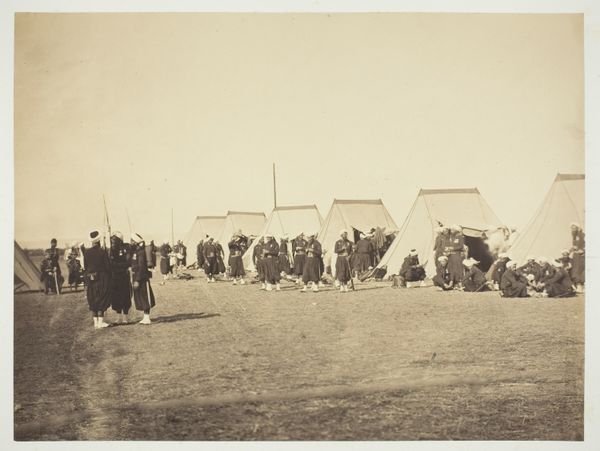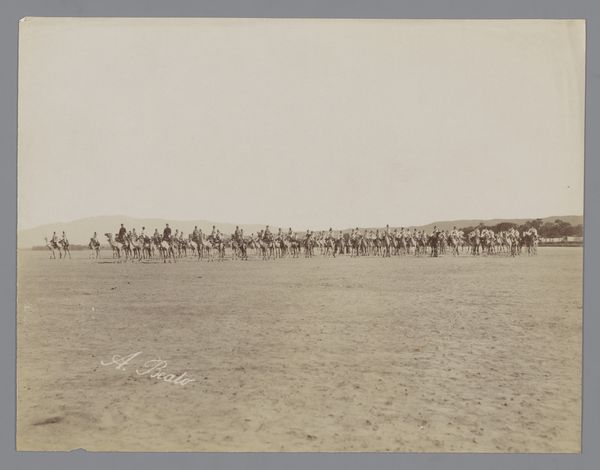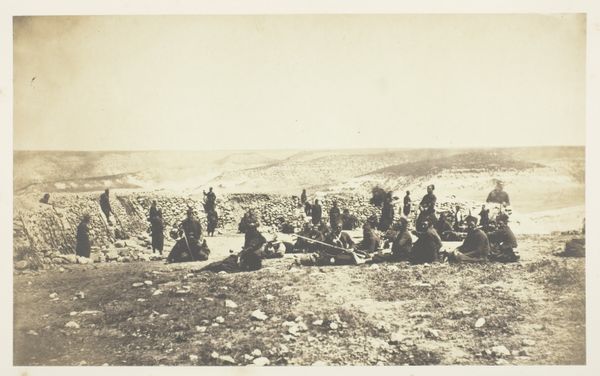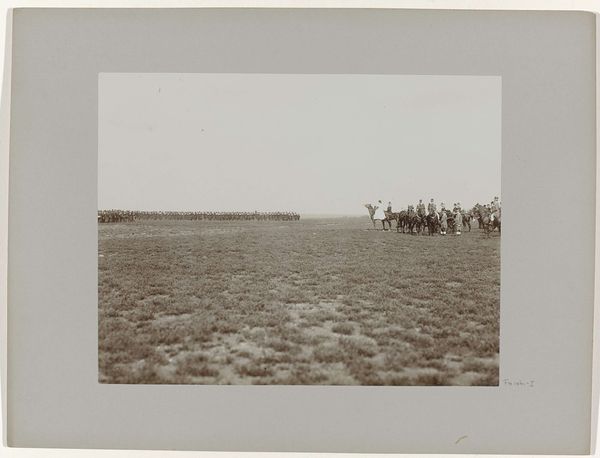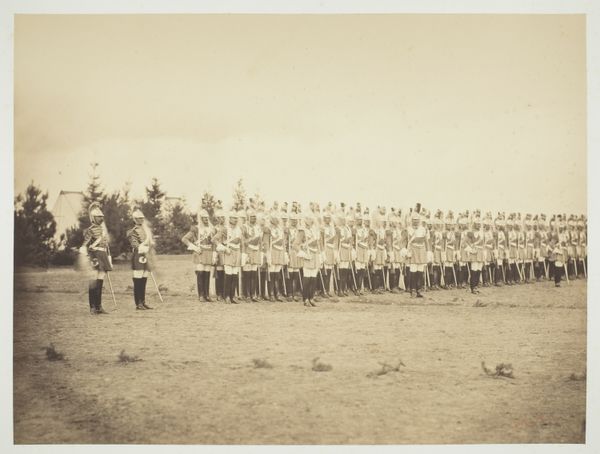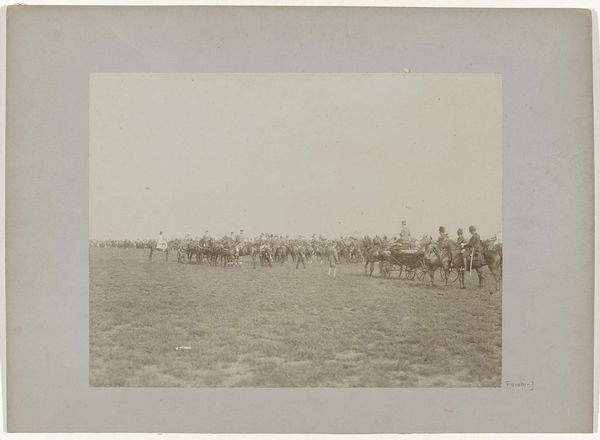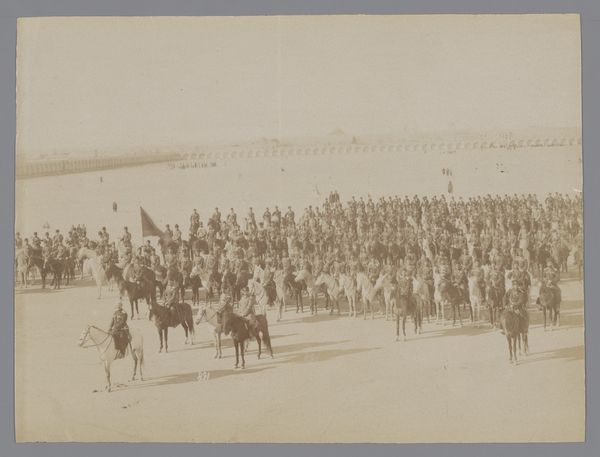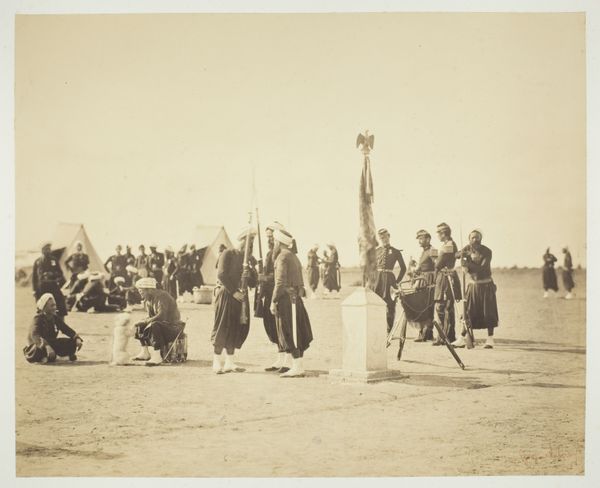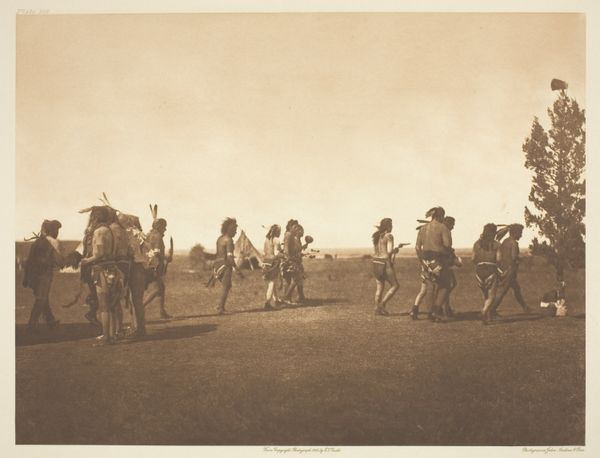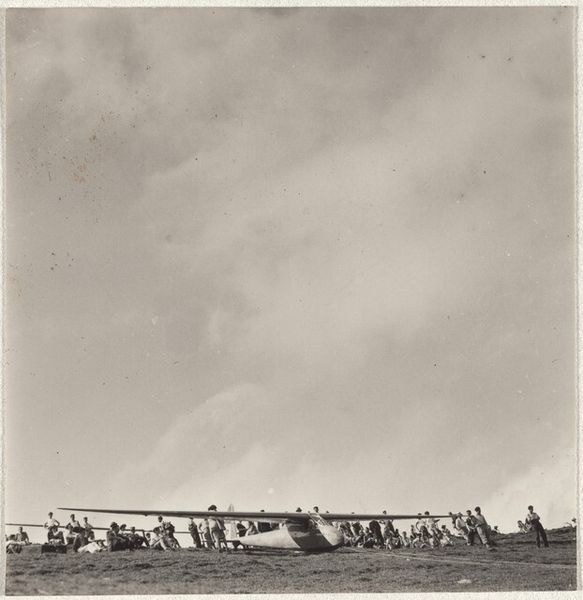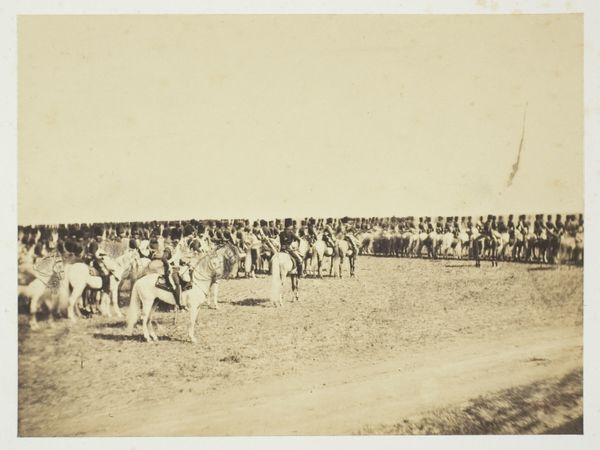
Dimensions: 27 × 36.4 cm (image/paper); 52.7 × 63.7 cm (album page)
Copyright: Public Domain
Curator: I find the repetitive forms almost mesmerizing. The cannon, the uniforms—all presented with striking clarity against the vast emptiness. Editor: Yes, the seemingly endless regiment creates a sense of anticipation mingled with a cold militaristic power. We're looking at an untitled work, a gelatin-silver print from 1857 by Gustave Le Gray, a prominent figure in early French photography. It's a scene staged perhaps to express political might. Curator: I’m drawn to how Le Gray composes with contrasting tonal bands. The dark line of soldiers dividing the arid land from the expansive sky. A rigorous articulation of space, it almost reduces the human presence to formal elements within a composition. Editor: I agree that the tonal quality is a masterstroke in creating an oppressive tone. The subject itself, rows of French artillerymen, reminds us that photography, even in its early days, served ideological ends. The Crimean war was concluding; France asserted influence in Europe and the Middle East. Le Gray found official favor and produced propaganda for the Empire. Curator: Are we certain that "propaganda" is quite the correct word for this particular composition? I wonder if the rows of repeating objects point to something about photographic realism and the capacity for infinite reproduction—predating even the discourse offered by Benjamin decades later. Editor: Given that Louis-Napoléon promoted photography that showed advancements in military technology, I find it hard to dismiss this reading of the photograph's intent. Yet your interpretation points to photography as a catalyst of social change by documenting people’s relationships with industrialization and social structures. Curator: An assessment I gladly receive! Even today the photo offers much discussion. Editor: A fascinating photograph to study.
Comments
No comments
Be the first to comment and join the conversation on the ultimate creative platform.


